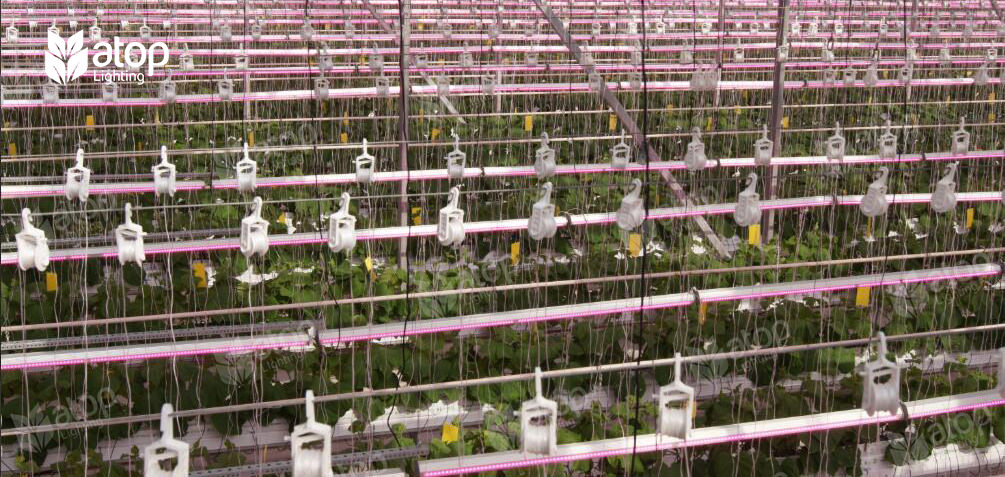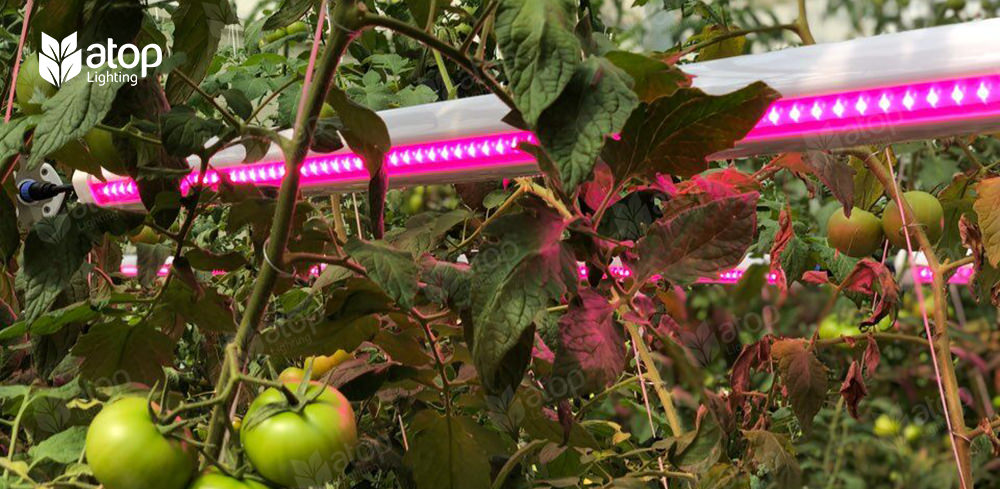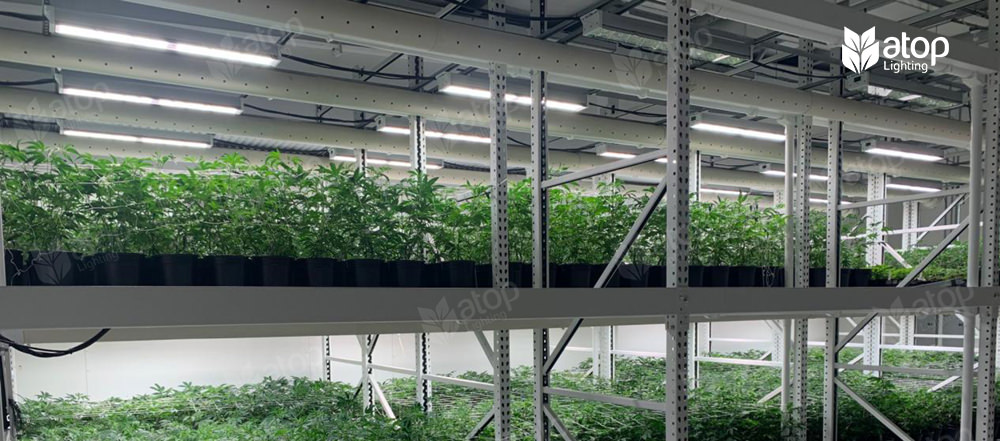What Is the Difference Between Red/Blue and Broad ‘Full’ Spectrum LEDs
When it comes to the horticultural LED spectrum, growers usually have two options - the 'full spectrum' or 'broad spectrum', which manifests as white light; and the 'red/blue spectrum', which can manifest as purple or pink light.
Red/blue spectrum LED luminaires are often referred to as narrow band spectrum lamps - because they emit wavelengths within a narrow band of light. LED luminaires that emit 'white' light are often referred to as 'broad spectrum' or 'full spectrum' lamps, as they include a broad band of the spectrum (more similar to the sun) and present 'white' light (no true white wavelength).
It should be noted that essentially all 'white' LEDs are blue LEDs that are coated with phosphor that converts blue light into longer wavelengths. The phosphor absorbs the blue light and re-emits some or most of the photons as green and red light. This coating reduces the efficiency of the LED in converting photons into usable PAR (photosynthetic active radiation) light, but makes for a better operating environment in the sole source application. The composition of the phosphor coating will help to determine the spectral quality of the white light emitted. To find the luminous efficiency of a luminaire, you need to divide the photosynthetic photon flux (PPF) of the luminaire by its input power. The higher this number is, the more efficient the luminaire is at converting electrical energy into photons.
Red/Blue LEDs
Many associate 'purple/pink' LED luminaires with horticultural lighting, using different combinations of red and blue LEDs, and recommend them to greenhouse growers who are already receiving the full spectrum of the sun. As photosynthesis peaks in the red and blue wavelengths, this makes this spectrum not only the most effective for plant growth, but also the most energy efficient. From this perspective, if you are already receiving the full spectrum of sunlight from outdoors, it makes the most sense to put most of your energy into the wavelengths most suitable for photosynthesis and you will see the greatest savings in energy costs. This combination is more energy efficient than 'white' or full-spectrum LEDs because blue and red LEDs have the highest photonic potency compared to other colours, meaning they convert the most power in photons, so you get more growth from your plants for every dollar spent.
So why do we need a combination of red and blue to grow plants and why can't we use only blue or only red LEDs? Although red is the most effective for photosynthesis, only red light can lead to poor growth, such as very slender stems, so blue is added to keep the plants compact and more typically shaped. On the other hand, you can't grow plants in blue light only, as their growth and development can be adversely affected. Over the years, researchers have found that having a combination of high red light and a lower percentage of blue light has proven to be the best way to produce greenhouse crops that are already receiving sunlight. As there is no 'ideal spectrum' for greenhouse crops, most LED manufacturers offer a fixed ratio of red to blue, which is considered to be the optimum ratio for the growth and production of horticultural crops.

If you are a greenhouse grower looking to install LEDs, we recommend our Horti-Reina red and white (medium blue) spectrum. This LED spectrum has a softer pink colour, is easier to work with and grade under plants than violet light, and has a high efficacy rating of 3.1 μmol/J, reducing energy consumption by 40% compared to conventional HPS systems. Growers have found that it delivers great results for many crops at all stages of growth, including vine crops, ornamentals, leafy greens and cannabis, whether as a stand-alone LED unit or in a hybrid application (HPS-LED combination).
Full-Spectrum “White” LEDs
While in a greenhouse the sunlight outside will balance the 'pink or purple' light emitted by the LEDs, in indoor applications with a single light source the same spectrum provides a limited spectrum for the crop and working in this situation can be unpleasant. As a result, many indoor growers have switched from narrow spectrum LEDs to 'white' broad spectrum LEDs.
Broad spectrum LEDs are less efficacious than red/blue LEDs due to conversion, energy and optical losses during phosphor conversion. however, as the luminaire is the only light source in indoor applications, broad spectrum LED luminaires are much better than red/blue because they emit a wide range of wavelengths for your crop at different stages of growth. This is important because as we do more research we find that wavelengths like green, previously not considered very useful, prove to be important in photosynthesis and certain morphological reactions. In addition, many of the full broad spectrum lamps can also emit energy in the far red region, which helps to promote stem extension and leaf expansion.
In an environment where only red/blue light is available, workers will not be able to correctly identify problems such as nutrient deficiencies, diseases and pests. Broad spectrum light is therefore not only more pleasing to the eye, but also easier to work with and assess plant health.
So while you can use red/blue LEDs in single-source applications, we strongly recommend the use of broad-spectrum LEDs due to the impact on human health and plant scouting. For growers in single-source applications, we offer the 'daylight' spectrum option of our fixtures - perfect for indoor crops such as hemp and leafy greens.
About the Author
Crystal Lee
T. +86-755-33581001-8284
M. +86-13316419863



